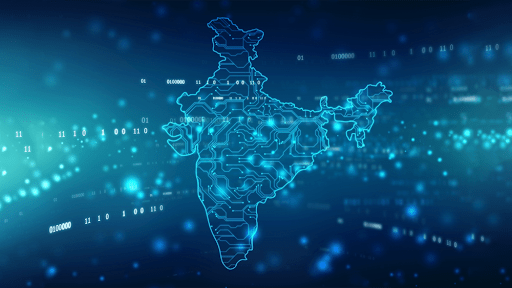In today's digital world, the internet plays an essential role in our daily lives. While we seamlessly browse the internet, watch our favorite shows, movies, and online content, and stay connected with personal and professional networks, there is a complex web of internet infrastructure that enables this seamless connectivity. Let us understand the intricacies of the infrastructure mechanisms that enable the Internet in India, list the stakeholders involved, and explore some of the existing challenges.
How do we access the Internet?
Let's take a look at the components of infrastructure that supply, distribute, and manage the Internet in India:
- Undersea Cables

Submarine communications cables, also known as undersea cables or subsea cables, are cables laid on the seabed to connect different land geographies to the Internet. Currently, there are 15 cables that traverse the ocean floor, linking India to internet traffic from abroad. These cables land in one of five cities in India: Mumbai, Cochin, Chennai, Tuticorin, and Trivandrum. Examples of major undersea cable systems include SEA-ME-WE (South-East Asia – Middle East – Western Europe), IMEWE (India – Middle East – Western Europe), and the BBG (Bay of Bengal Gateway). These cables provide reliable and high-capacity international data exchange and connectivity for India.
- Internet Service Providers (ISPs) and Internet Exchange Points (IXPs)

ISPs are the face of the internet for citizens and customers as they provide the necessary infrastructure and services to connect them online. ISPs connect to various IXPs, which serve as meeting points where localized internet traffic is efficiently and sustainably exchanged across the country. In India, there are close to 600 ISPs, including large national players like Jio, Airtel, Vodafone Idea, and BSNL, as well as numerous small regional players, enabling over 830 million internet users in the country.
- Last Mile Connectivity

This portion represents the final links of wired and wireless infrastructure that provide internet access to end customers through their devices.
- Wired Infrastructure

Homes across the country are supplied with broadband through either Digital Subscriber Lines (DSLs), which use existing copper telephone lines to provide slow internet access, or Fiber-to-the-Home (FTTH) connections, which utilize dedicated optical fibers to deliver high-speed internet to households and businesses.
- Wireless Infrastructure

Mobile network operators (MNOs) have been playing a crucial role in India's internet growth story. As the number of smartphone users continues to grow, MNOs have facilitated the widespread deployment of technologies like 3G, 4G, and now 5G across the country through robust cellular towers, base stations, and core network elements. Wireless internet services have enabled the economic and social revolution that India has witnessed recently.
- Data Centers

Digital services require one or more buildings known as data centers (DCs) to support them. These centers house servers, storage systems, networking equipment, and trained staff. In addition to storing data and equipment, data centers process large volumes of data, supporting key services like cloud computing, content streaming, e-commerce, e-governance, and more. The construction and use of data centers have increased across the country as companies realize the value of faster data access and lower latency.
Challenges in Internet Connectivity in India
Despite the incredible growth that the industry has undergone, there are concerns that need to be addressed to ensure sustainable growth. Some of these challenges include:
- Rural and Remote Connectivity

Access to the internet has a positive correlation with the economic development of a region. Efforts like BharatNet have made progress in connecting 250,000 gram panchayats (village councils) with high-speed internet. However, more needs to be done to prioritize internet access and use in remote and rural areas.
It is crucial for all stakeholders, including society, government, and businesses, to collectively work toward improving infrastructure and internet literacy to maximize the benefits for citizens.
- Bandwidth and Speed

As the demand for the internet grows, ensuring sufficient bandwidth and speed for customers and enterprises becomes a challenge. Internet infrastructure is expensive and geographically widespread, requiring continual investment in upgrading, innovation, and advanced technologies to enhance the Internet experience.
- Cybersecurity

With the increasing number of users and services available online, investing in user and platform protection is crucial. Cyber threats pose significant risks to individuals, enterprises, and platforms. Prioritizing cybersecurity is essential to protect against cyber-attacks and ensure data privacy.
Closing thoughts
India's internet infrastructure, though often silent and siloed as an industry, has been the backbone of the nation's growth story in the digital era. Infrastructure components like cables, exchanges, government entities, and telecommunication companies have played critical roles in providing a seamless online experience for Internet users. Embracing innovative technologies, increasing access for all citizens, scaling infrastructure efficiently, and addressing challenges are key to maximizing the benefits of digital technologies and fostering inclusive economic and social growth in India.
At Lightstorm, we are building infrastructure for hyperscale networking in South Asia, Southeast Asia, and the Middle East to accelerate the region's growth and spur innovation in the digital economy. With industry-leading technologies and experience, we are constructing a first-of-its-kind utility-grade resilient fiber network, SmartNet, in several countries. Our Network-as-a-Service (NaaS) platform opens new opportunities for enterprises by providing a simple, secure, and smart way to enhance their application performance and user experience. As a trusted partner of several Fortune 500 companies, Lightstorm is creating a robust foundation of digital infrastructure to generate new sources of value and differentiation for businesses.


